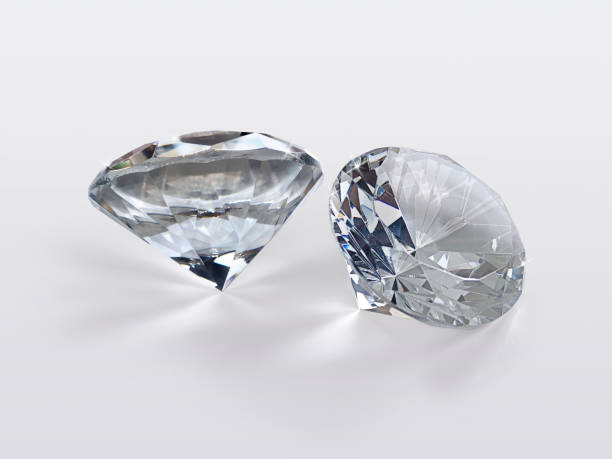HPHT VS CVD Diamonds
0 comments
SHOP BY STYLE ✧
SHOP BY SHAPE ✧
![]()
![]()
![]()
![]()
![]()
METAL COLOR ✧
WEDDING BANDS
SHOP BY STYLE ✧
![]()
![]()
![]()
SHOP BY STONE ✧
SHOP BY METAL ✧
JEWELRY FOR THE BIG DAY
NECKLACES ✧
EARRINGS ✧
BRACELETS ✧
Engagement ✧
SHOP BY SHAPE ✧
![]()
![]()
![]()
![]()
![]()
![]()
SHOP BY COLOR ✧
SHOP BY CATEGORY✧

SHOP BY CATEGORY✧
SHOP BY OCCASION✧
SHOP BY PRICE✧

Birthstone Jewelry

In the ever-evolving world of diamonds, technology has ushered in a new era with the advent of lab-grown diamonds. Among the various methods used to create these exquisite gems, two prominent techniques stand out: High Pressure High Temperature (HPHT) and Chemical Vapor Deposition (CVD). In this blog, we will delve into the intricacies of HPHT and CVD diamonds, exploring their unique processes, characteristics, and the impact they’ve made on the jewelry industry.
HPHT diamonds are created using a method that simulates the high-pressure and high-temperature conditions present deep within the Earth’s mantle, where natural diamonds are formed. In this process, a diamond seed is exposed to extreme pressure and high temperature, facilitating the crystallization of carbon atoms into a diamond structure.

CVD diamonds are produced through a chemical vapor deposition process. This involves introducing a mixture of gases, including a carbon source, into a chamber where the gases are ionized or activated by microwaves or other energy sources. Carbon atoms are then deposited onto a substrate, forming a diamond crystal layer over time.
HPHT diamonds often exhibit a higher degree of colorlessness and purity compared to CVD diamonds. The high-pressure conditions during the formation process can remove or alter impurities, resulting in diamonds with desirable color grades.

CVD diamonds may contain certain impurities due to the gas mixture used in the deposition process. The color of CVD diamonds can vary, and while some are colorless, others may exhibit shades of brown or yellow. Advances in technology, however, have allowed for the production of high-quality colorless CVD diamonds.
HPHT diamonds tend to have fewer inclusions and blemishes, contributing to a higher clarity rating. The high-pressure conditions can help eliminate or minimize internal flaws.

CVD diamonds may have a higher likelihood of inclusions, but this can vary depending on the specific growth conditions and technologies employed. Advances in CVD processes have improved the clarity of these diamonds over time.
HPHT diamonds are often available in larger sizes, and their shapes may be influenced by the natural diamond crystal structure. This can include traditional shapes such as round brilliants, princess cuts, and more.

CVD technology allows for more control over diamond growth, making it easier to produce diamonds in various shapes and sizes. Additionally, CVD diamonds are often preferred for manufacturing purposes, where specific shapes and sizes are required.
HPHT requires high-pressure and high-temperature equipment, which is costly to operate, but the process is well-established and has been optimized over decades.

CVD diamonds are generally more cost-effective to produce, making them an attractive option for consumers looking for an affordable yet high-quality alternative to natural diamonds.
HPHT diamonds are often perceived as having a more traditional and natural appeal. They are embraced for their high quality, particularly in terms of color and clarity.

CVD diamonds are gaining popularity, especially among consumers looking for sustainable and affordable options. Their versatility in terms of size and shape makes them appealing for various jewelry applications.
In conclusion, both HPHT and CVD diamonds have their unique advantages and considerations. The choice between them often depends on individual preferences, budget constraints, and the intended use of the diamond. Advances in technology for both processes continue to shape the diamond market, providing consumers with a range of options to suit their preferences and values.

